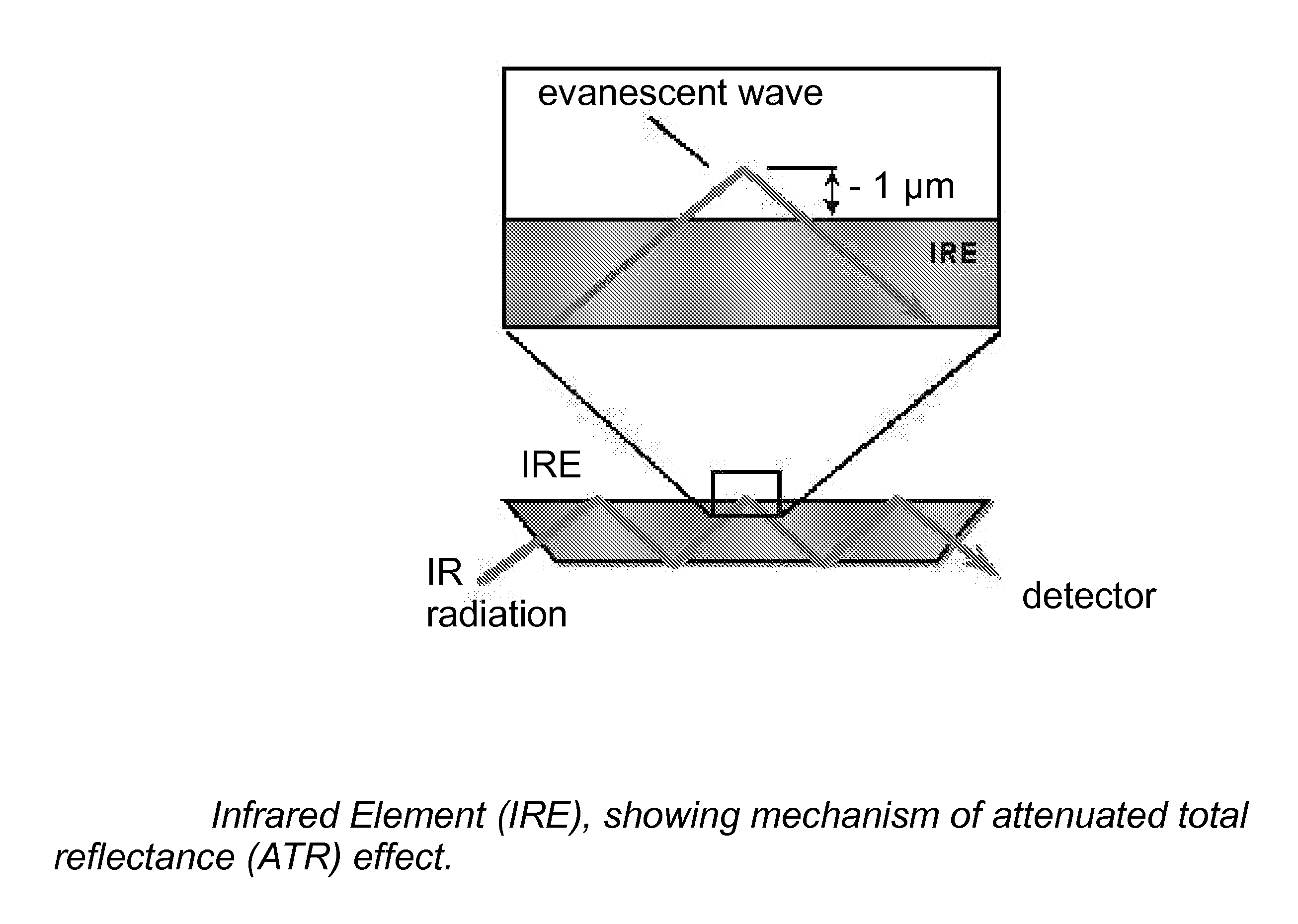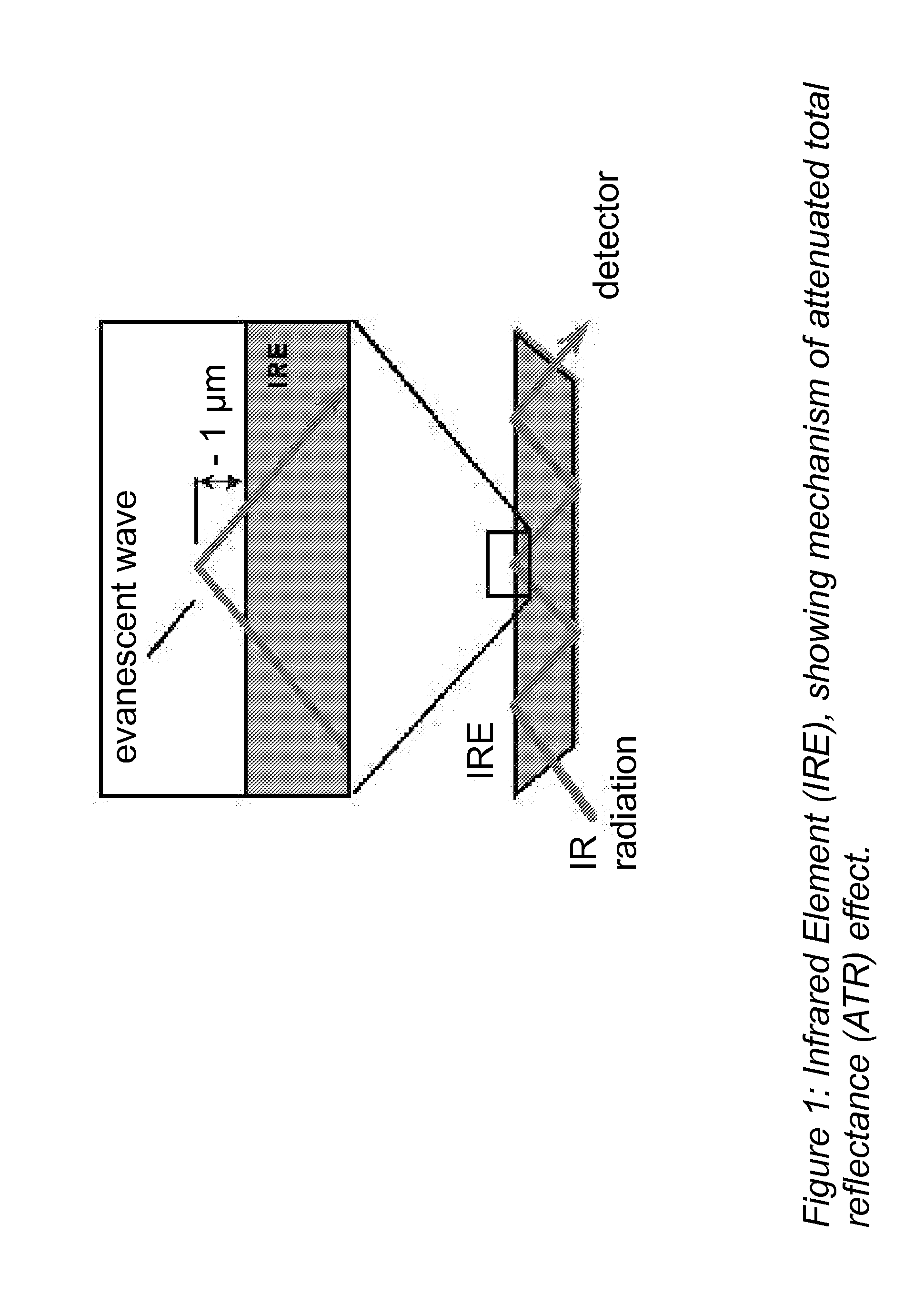Method for Detecting and Measuring Low Concentrations of Contaminants Using Attenuated Total Reflectance Spectroscopy in the Mid-IR Range
a technology of attenuated total reflectance and low concentration of contaminants, which is applied in the direction of optical radiation measurement, instruments, and investigating moving fluids/granular solids, etc., can solve the problems of compromising the performance of fuel oil, unsuitable for continuous monitoring of process or waste fluids, and essentially laboratory-based methods
- Summary
- Abstract
- Description
- Claims
- Application Information
AI Technical Summary
Benefits of technology
Problems solved by technology
Method used
Image
Examples
example 1 (
Prior Art)
[0036]A solution of toluene in water (200 ppm) in distilled water was prepared and its FTIR spectrum (distilled water background) was collected using a ZnS ATR crystal with a coating of ethylene-propylene copolymer (approx. 10 micrometers thick, applied by dip-coating). Spectra were collected every minute for 10 minutes. The prominent peak near 1495 cm−1, usually assigned to the aromatic C-C stretch, is shown in FIG. 2 after data collection for 2, 4, 6, 8, and 10 minutes. The intensity of the peak increases over time as toluene is concentrated in the polymer layer close to the surface of the ATR element. This complicates calibration of the method, and makes real-time data collection difficult.
example 2
[0037]Two solutions of hexane (50 and 100 ppm by weight) in distilled water were prepared and their FTIR spectra (distilled water background) were collected using a ZnS ATR crystal attached to the fiber-optic probe. A feature was observed between 2800 and 3000 cm−1 (see FIG. 3); this is characteristic of the C-H stretch of hydrocarbon compounds; the feature varies in proportion to the hexane concentration.
example 3
[0038]Three solutions of water in hexane were prepared (600, 450, and 150 ppm by weight) and the FTIR spectra (air background) were collected using a germanium ATR crystal attached to the fiber-optic probe. A feature was observed between 3130 and 3690 cm−1 (see FIG. 4); this is characteristic of the O-H stretch of water. A simple graph of peak height versus water concentration (FIG. 5) shows that the relationship is quantitative, and that quantitative calibration is possible.
PUM
 Login to View More
Login to View More Abstract
Description
Claims
Application Information
 Login to View More
Login to View More - R&D
- Intellectual Property
- Life Sciences
- Materials
- Tech Scout
- Unparalleled Data Quality
- Higher Quality Content
- 60% Fewer Hallucinations
Browse by: Latest US Patents, China's latest patents, Technical Efficacy Thesaurus, Application Domain, Technology Topic, Popular Technical Reports.
© 2025 PatSnap. All rights reserved.Legal|Privacy policy|Modern Slavery Act Transparency Statement|Sitemap|About US| Contact US: help@patsnap.com



